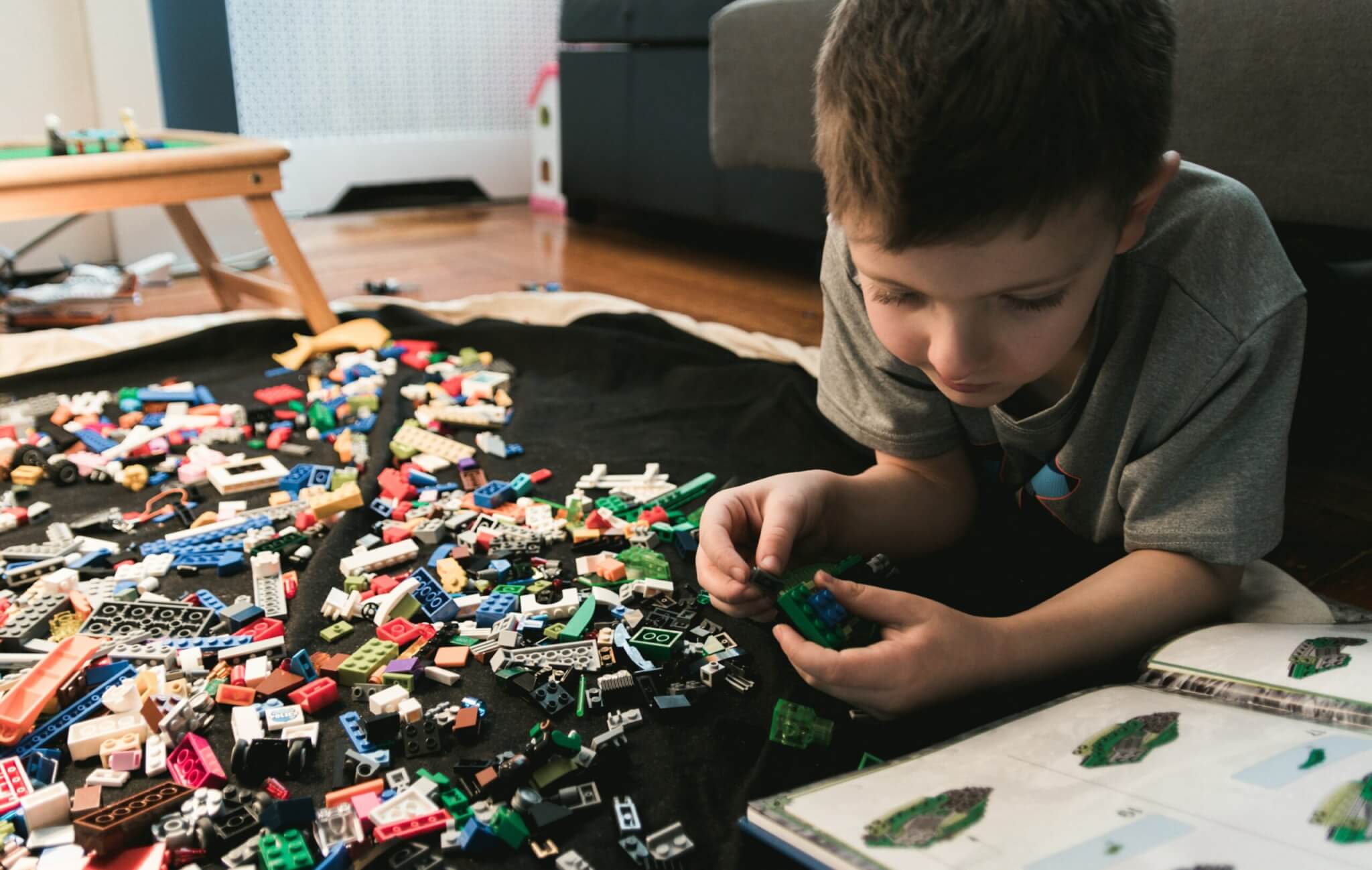Why Children Need Lego Now More Than Ever

Parents in their thirties and forties have a curious habit of calling Lego “good toys,” which is generally not the way they describe toy trucks, dolls, tops, jacks, and so forth. Trucks and dolls might be good toys, but children of the 80s and 90s speak of Lego with the same reverential tone and conviction other people use when speaking of “a good man” or “a good woman.” And yet, the same people who commend Lego as “good toys” usually go on to qualify the claim by disparaging many Lego sets of recent years, especially the ones which are based on movie franchises. We are far more opinionated about Lego than other toys.
However, when asked why Lego are such good toys, many parents stumble for words. They say Lego “encourage creativity,” they furrow their brows and think further, then they confess there is more to it than that, but don’t know how to put it into words. Developmental psychologists say Lego help develop fine motor skills, prompt cooperative play, and offer practice in problem solving. As a teacher of philosophy and classic literature, I don’t think any of these claims gets to heart of the matter. Instead, I think Lego teach us how to think about reality.
When I teach the works of Plato and Aristotle, I often have to explain highly abstract concepts like form, soul, and being to my students. While these might seem like concepts which only the rarest sorts of academicians and theologians need to understand, one simply cannot have a deep conversation about morality apart from some grasp of these terms. For the last ten years, I have kept a number of Lego Architecture models in my classroom and found them profoundly handy when explaining what things are to students— and when I say “things,” I don’t mean particular things, like trees and tables and dentists, but the very idea of things.
When explaining the concept of the soul to students, I hold up a small Lego model of the Sears Tower and ask what it is. They tell me it is the Sears Tower. I ask them how they know, and they tell me, “It looks like the Sears Tower.” I ask what the model is made of and they tell me, “It is made of blocks.” Of course, the Lego model of the Sears Tower I show them is not based on the Sears Tower in Chicago, but in a mock-up of the Sears Tower found in the instructions which came with the Lego set. Thus, we have three images of the Sears Tower: the real building in Chicago, the ideal version in the Lego instructions, and the one made with Lego blocks that sits on my desk.
Of course, the real building in Chicago was constructed from blueprints, and those blueprints were based on an architect’s ideas, all of which leads to the following hierarchy:
5. The architect’s ideas
4. The blueprints based on the architect’s ideas
3. The actual building based on the blueprints
2. The Lego instructions based on the actual building
1. The plastic Lego building based on the Lego instructions
The average six-year-old may not think through all five of these steps, but he certainly thinks through steps one through three. In other words, the child who builds the Sears Tower must contemplate building-ness in order to make a Lego building. He must ask, “What makes a building a building?” He must contemplate truck-ness in order to make a Lego truck or house-ness in order to make a house. The contemplation of truckness allows a child to tinker with greater and lesser degrees of reality. While this is somewhat true with other toys, Lego make the hierarchy of being far more clear than other toys do.
The child who is given a readymade plastic truck is only asked to contemplate two degrees of reality: the plastic and the real. Likewise, a baby doll only asks a child to consider two degrees of reality, as does a toy gun, a toy oven, and so forth. However, Lego add a third component to contemplations of reality and allow children to see the world is not a duality, not split down the middle, not naturally at war with itself. The Lego building is based on the Lego instructions, the Lego instructions are based on the actual building, the actual building on the blueprints, the blueprints on the architect’s idea, but what is the architect’s idea based on? Lego prepare the mind to ascend the hierarchy of being and to understand there is something higher and realer beyond all things— and that something is God. God is the idea of ideas, the power of powers, the kingship of kings, and He rules for ages of ages.
In addition to training children to contemplate reality, Lego also reward those who respect reality, for even children know the difference between those who are “good at Lego” and those who are not. The child who is “good at Lego” is capable of deeply conceiving whatever he wants to build— a truck, a car, a fortress— then bringing the materials he has at hand to mirror the immaterial idea in his head. In a crowd of children playing with Lego, there will always be one whose imagination runs deeper than the rest, which does not mean his creations are more bizarre and original than the rest, but that he pays attention to what things are and how things are and his creations bear witness to reality in more convincing ways than his peers. This is the beginning of common sense, which is simply the humility required to pay attention to the world. If ten children were each asked to make a rocket ship out of Lego, I would wager green money the child who came up with the most outlandish, arbitrary, asymmetrical design was the one with the highest screen time average every day. Screen time is nothing more than exile from reality.
Children who are capable of contemplating reality, and who participate in activities which reward respect for reality, are better situated to identify fake things when they see them: fake love, fake politics, fake men, fake women, fake songs, fake promises. Fake things are not lesser manifestations of the real— a teddy bear is not a fake bear, neither is a Lego truck a fake truck. Fake things show contempt for the hierarchy of being. They are not little tributes to reality, but contempt for reality.
Ours is a society which finds it harder by the year to identify fake things, a sad result of having abandoned the source of reality. The man who rejects the idea of the supernatural will find it impossible to tell the difference between the natural and the unnatural. If there is no God, no source of reality, neither is there a hierarchy of being, for there can be no top. Without a hierarchy of being, one is left saying all things are real, all things are fake, or endlessly oscillating between the two positions depending on prevailing cultural trends.
While I am not suggesting a child who plays with Lego will inevitably become a Christian, I am suggesting that Lego play cannot help but place a child in the role of moderator between greater and lesser manifestations of reality. The supernatural and perfect forms of trucks hang over the child at play, his intellect forms imperfect images of trucks within his mind, his hands form tangible trucks to amuse his friends. He is responsible to some ideas, responsible for others. He is under authority, and others are under his authority.
Given all that is good about Lego, the ire which thirtysomething parents direct at Lego sets modeled after movie franchises is perfectly understandable. Such sets are not modeled after the real, the ideal, or the remotely historical, but after greenscreen films that cater to people who are already addicted to fake things. Harry Potter themed Lego assume children are too dimwitted to turn the Downtown Fire Brigade set into Hogwarts, or that it is more fun if you don’t have to. I write this as someone who naively bought my children the Lego Hogwarts castle last Christmas and have not let them take it apart ever since, even though they can’t have fun with it in its finished state.
Some might say children did fine without Lego for thousands of years, though it would be better to say they did fine without television for thousands of years but have done perfectly rotten with television for the last seventy-five years. Lego are a fine antidote to the dazzling, coddling banality of modern toys, which “arrive to boast and swagger, and by-and-by break their mainsprings and pass away,” as Marjorie Williams writes in The Velveteen Rabbit. A set of Lego will last forever, though it is not likely to “become real” in the sense the Skin Horse and the titular Velveteen Rabbit do, for the things a child builds with Lego do not have faces and thus do not inspire love— nonetheless, Lego train the mind to discern real from fake and to seek out the loving source of all good things, Reality Himself.

Joshua Gibbs
Joshua Gibbs teaches online classes at GibbsClassical.com. He is the author of How To Be Unlucky, Something They Will Not Forget, and Blasphemers. His wife is generous and his children are funny.











